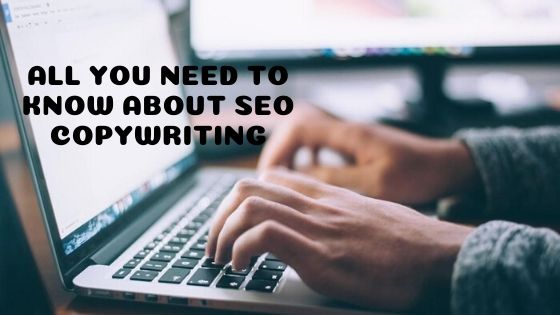Every content strategy sees SEO copywriting as a challenge. If you master it and make the right moves, you’ll make a huge step towards success. The reason why it presents a worry to copywriters is that you need to keep up with the ever-changing search engine’s criteria and create a good copy at the same time.
Effective SEO copywriting strategy will drive you traffic organically and from different sources. If done well, it can also place your website in a high position in search results. So, what does it take to be successful in SEO copywriting? This ultimate guide will provide you with all information that you need about the phenomenon that is SEO copywriting.
What is SEO Copywriting
SEO copywriting embodies two essential elements for driving traffic to your website. There is the art of writing great content that encourages the reader to take action on one hand and signaling search engines the value of your website on the other.
You’ll know that you’ve mastered SEO copywriting when you have online content that:
- Ranks high on Google
- Drives qualified traffic
- Engages readers
- Convinces readers to take action
To form a strategy that works and brings results you need to include several crucial steps. If you want to make a difference in your business with SEO copywriting, here’s what you mustn’t overlook.
Keyword Research
One of the founding elements of an SEO strategy is keywords. Some try to demean the importance of keywords but in the end, no one can say that they don’t matter.
Why are keywords important?
Keywords tell the search engines what your content is about. Based on them, search engines connect the right audience to your website. Including the right keywords means that you’ll attract your target audience. Consequently, you’ll have a better chance to increase your sales.
When it comes to the type of keywords there are:
- Basic keywords – Consisted of a word or two that present the main outtakes of your copy (for example, women’s shoes).
- Long-tail keywords – Phrases of 3-4 words. They became more valuable than basic keyword because that’s how people search the internet. Besides, they provide context and have a better conversion rate (for example, women’s black platform shoes).
- LSI (latent semantic indexing) keywords – Words or phrases that are usually found together within a certain topic(for example, if the copy is about cards, LSI keyword would be gas, price, mileage, etc.)
The best places to add keywords are:
- Headline
- Subheadings
- Meta-description and meta-titles
- Relevant parts of the content
Be very careful about how you place your keywords. They need to fit naturally into the copy. Otherwise, they will ruin the content’s quality and confuse the readers. A handy tip is to first write down the keywords you want to use and then add them to the copy as you write. If you first write the copy and then start adding keywords, you’ll waste time and make your job much harder.
Collect Information About Your Target Audience
Custom-tailored copy to a specific audience always performs better than a generic copy. But how can you write custom copy when you don’t know who your readers are?
Analyzing your target audience will help you recognize the type of copy that will attract and retain their attention. Search engines also prefer targeted content. When you write targeted content, search engines recognize that it has more value for users and therefore, ranks it higher.
The information you need is:
- Target audience’s demographics (age, gender, location, educational background, occupation, etc.)
- Target audience’s interests
- Target audience’s likes and dislikes
You can attain this information from different sources:
- Use Google Analytics or a similar platform to analyze your current audience
- Look your list of followers on your social media
- Find out more about competitors audience from their website or social media
- Explore forums about your niche or products and use the information about those users
Knowing your target audience is the most basic aspect of affecting copywriting. You mustn’t underestimate its importance.
Write in Audience’s Language
Did you know that 50% of the US population read below an 8th-grade reading level? Complex words and industry slang won’t surface the desirable reaction. How can you expect people to buy your products or take the action you want if they can’t understand the content?
The most reliable way of determining your writing style is to analyze the audience’s language. Based on the information you collected about your target audience, you’ll know who they are and on which pages they spend their time on. Check their writing in their posts or comments. This will help you create a writing style that will connect with the readers.
The point of copywriting is to encourage the audience to interact, purchase, or at least memorize your business. Impressing them with your vocabulary won’t do the trick. What they’ll value is if you communicate with them as a friend or advisor.
Not only will relating to your audience bring you more traffic but they’ll also be more enticed to share your post with others. Don’t forget to add social sharing buttons to all pages.
Create Captivating Headlines
The first impression matters we can all agree on that. What is the first thing that the audience encounters? The headline.
The headline that is simple, straightforward, and effective gets more points with both the audience and search engines. People go for headlines that are specific and that show what the copy is about. Lengthy headlines aren’t the best choice since people tend to skim the search page at first.
The aspect of the headline that matters to search engines is that it is related to content. Which means that you should forget about click-baits. You might get the first click but your bounce rate will increase as well.
Headlines that start with a number such as “X Ways to..” or “X Reasons that Show…” attract the audience. It gives them a clear indication of what they can find inside. As people like organized content, the numbering shows that the content is structured.
Power words are also a good option for headlines. Just be sure that the power words correctly matches the copy.
Enticing Introduction
A poor introduction can chase away any reader. Your copy might be extraordinary but if the intro is bad, the readers won’t even get to it.
The way in which poor introduction hurts your SEO is that it can increase your bounce rate (just as click bates). The introduction needs to compel users. To show them that they are in the right place and that you have exciting content for them. Give the readers a brief idea and possibly add a hook that will make them want to keep reading and possibly buy the product or service.
Many writers find the introduction to be the hardest part of writing which is why you may need some help from time to time. You can try TrustMyPaper and BestEssayEducation, these writing services have writers who perfected their research skills which makes them experts in adjusting to any project.
Choose the Right Form of Content
The top-ranking pages don’t always come in the same form. You need to create the kind of content that is most popular for your main keywords.
To explain this further, we’ll provide you with an example. If your main keyword is “running shoes” the tops pages can be an e-commerce website. However, for the keyword “iPhone 11 unboxing” the dominant content style in the search results can be video.
Before you start creating the copy do some research on the type of content that ranks best for your topic. Simply type in several main keywords that you have in mind for that content and see what turns up in the top results.
The content type can be a blog, product page, landing page, or video for example. Identifying the best-ranked type of content can save you time. You don’t need to spend time on blog posts if the audience isn’t interested in that type of content.
What you’ll also be able to learn from this research is the content angle that the audience favors. For example, it can be the “X Best..” approach or “How to..” approach.
Analyze the top-ranking pages and learn from their example. They can save you a lot of time by pointing you in the right direction.
Final Thoughts
The only constant in search engine optimization is changing. While trends and new advice come and go, the above-mentioned elements of SEO copywriting are always impactful. They are the foundation of SEO copywriting and you shouldn’t skip any of the steps.
Keep in mind that optimized copy demands effort, time, and patience. No matter how quick you master the technique the results won’t be instantly visible. All you need to do is to show dedication and persistence and the traffic and conversions will come.






